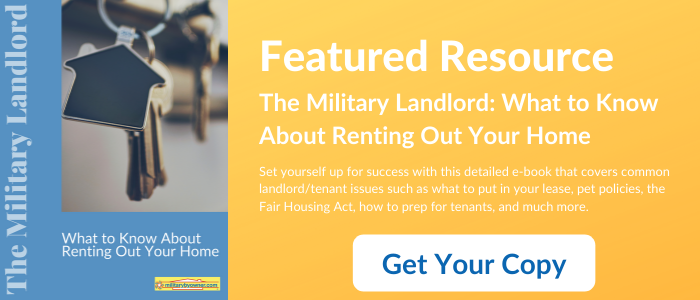Essential Terms Landlords Should Include in a Lease
A comprehensive lease simplifies property management by eliminating areas of potential disagreement between the landlord and tenant. When creating a lease agreement, it's crucial for landlords to ensure that it covers all necessary details to protect both parties. Here are some key elements that you may want to include in your lease.
Before you create a lease, keep in mind:
Pro tip #1: All leases should be written in the plainest language possible to minimize miscommunications.
Pro tip #2: Have your lease reviewed by a real estate attorney in the state, city, or county where the property is located to ensure that the terms are legal in that locality.
 Photo from iStock.com/xeni4ka
Photo from iStock.com/xeni4ka
Property Details
Description of Rental Property
Provide a detailed description of the rental property, including the full address and unit number. List any included furnishings or appliances and any outbuildings or additional features (like a garage, parking space, or storage area) that the tenant is entitled to use. If there is a space that they cannot use, such as a locked closet, be specific.
Responsibilities for Maintenance and Repairs
Define the responsibilities of both the landlord and the tenant concerning maintenance and repairs. Outline what kinds of repairs and maintenance the landlord will handle, such as major plumbing issues, and what the tenant is responsible for, such as replacing light bulbs. Clarify the tenant’s responsibility for reporting needed maintenance, how to report issues, the expected timeframe for responses and repairs, and the consequences for not reporting problems.
Tenant Alterations and Improvements
State whether tenants are allowed to make any alterations or improvements to the property, such as painting walls or installing shelving. If alterations are permitted, clarify whether the tenant needs written consent from the landlord and whether the tenant must return the property to its original condition at the end of the lease.
 Photo from iStock.com/MangoStar_Studio
Photo from iStock.com/MangoStar_Studio
Occupants
Listing Tenants
Include the full names of every adult who will live in the rental property. Depending on how you construct the lease, this may make each tenant individually responsible for all terms of the lease, including the full rent amount and the condition of the property. This gives you more options if something goes wrong.
Guest Policy
Stipulate that only the tenants named in the lease and their minor children can live in the rental unit. Include a phrase that explains how long guests can stay without becoming occupants. Don’t be difficult, but put in something to protect yourself. There’s no right answer here, but somewhere between two weeks and a month is common.
 Photo from iStock.com/SouthWorks
Photo from iStock.com/SouthWorks
Pet Policies
Types of Pets Allowed
Specify whether pets are allowed and, if so, what types and how many. For instance, you may only permit cats and dogs under a certain weight limit or restrict breeds considered aggressive. Outline any additional pet-related fees or deposits and whether they are refundable or non-refundable. Specify that any damage caused by pets must be repaired by the tenant or deducted from the security deposit.
Pet Owner Responsibilities
Have tenants list each animal by name, type, and description. Include language that describes the process for adding a new animal or replacing an animal in the home, if you will permit it. If you will not permit it, make it clear in the lease.
Detail the tenant’s responsibility for their pet’s behavior, including noise control, waste disposal, and ensuring the pet does not disturb other residents or cause property damage. This may include issues like leashing pets in common areas or prohibiting pets from being left unattended on balconies or in yards. Describe how you will proceed if there is an incident in which animal control becomes involved.
Explain the actions that will be taken if any of the pet terms are violated. It is nearly impossible to enforce removing a pet from a home, so what other actions will you take?
 Photo from iStock.com/Drazen Zigic
Photo from iStock.com/Drazen Zigic
Rental Period
Lease Duration and Renewal
Clearly state the duration of the lease, specifying the start and end dates. Explain the process for renewing the lease, including any notice period required by either party. Similarly, outline how either party can terminate the lease before its end date, including notice obligations and penalties for early termination.
If you intend for the lease to become month-to-month after the initial term, lay out the conditions for this shift.
Subletting Policies
Outline whether subletting or assigning the lease is allowed. If so, detail the conditions or requirements for doing so, such as obtaining the landlord’s written permission.
Financial Details
Rental Fees and Deadlines
Specify the amount of rent, when it is due (e.g., the first of the month), and how it should be paid (e.g., by check, online transfer). Include details about any grace period and late fees. Also spell out the order in which money will be applied. When legal, many landlords specify that money paid goes first to outstanding fees and costs before being applied to the actual rent.
List the amount of the security deposit, the conditions under which it will be retained or returned, and the timeframe for its return. This is an area where it is very important to comply with local laws.
Utilities and Renters Insurance
Specify the utilities covered in the rent, such as water, gas, and electricity, as well as any additional expenses like trash collection and lawn care, distinguishing between those included and those the tenant must pay for.
State whether tenants are required to have renter’s insurance and whether the landlord needs to be named in the policy. This can help protect the tenant’s personal property in case of damage or loss and can provide liability coverage. Some landlords also require proof of insurance upon signing the lease.
Find state-specific real estate forms, including a landlord/tenant package, at U.S. Legal Forms.
 Photo from iStock.com/wutwhanfoto
Photo from iStock.com/wutwhanfoto
Other Expectations
Rules and Regulations
Include any specific rules and regulations that tenants must follow. This could cover noise levels, smoking policies, and any other guidelines necessary to maintain the property and ensure the comfort of all tenants.
Landlord's Right to Enter
Specify the landlord’s right to enter the rental property, under what circumstances, and the amount of notice. Typical reasons for entry include inspections, repairs, or showing the property to prospective tenants. Most states require landlords to provide advance notice (usually 24-48 hours) before entering a rental unit.Lea
Showing the Property
If you will require your tenant’s assistance with showing the property at the end of their tenancy, write this out very clearly. Showings are a very common area of landlord-tenant disagreement, and a vacancy due to disagreement can be costly.
Lease Violations
Outline the actions that may be considered a breach of the lease agreement, such as failure to pay rent or violating any terms outlined in the lease. Detail the options available to the landlord in case of such breaches, including imposing late fees or initiating eviction proceedings.
Include a clause that outlines how disputes between the landlord and tenant will be resolved. This might involve mediation or arbitration before taking any legal action.
Legal Disclosures
Lead-Based Paint
If the rental property was built before 1978, federal law requires landlords to disclose the possibility of lead-based paint. Include this disclosure in the lease and provide tenants with any necessary informational pamphlets.
Mold Issues
Address any known mold issues in the property and the steps taken to remedy them. Provide guidance on how tenants can prevent mold growth and how to report any new mold problems.
By including these essential elements in a lease, landlords can create a clear, comprehensive agreement that protects their property and outlines their expectations. A well-crafted lease helps prevent disputes and misunderstandings and also fosters a positive landlord-tenant relationship.
Did you find this post to be helpful? Please share it on Pinterest with the image below!






